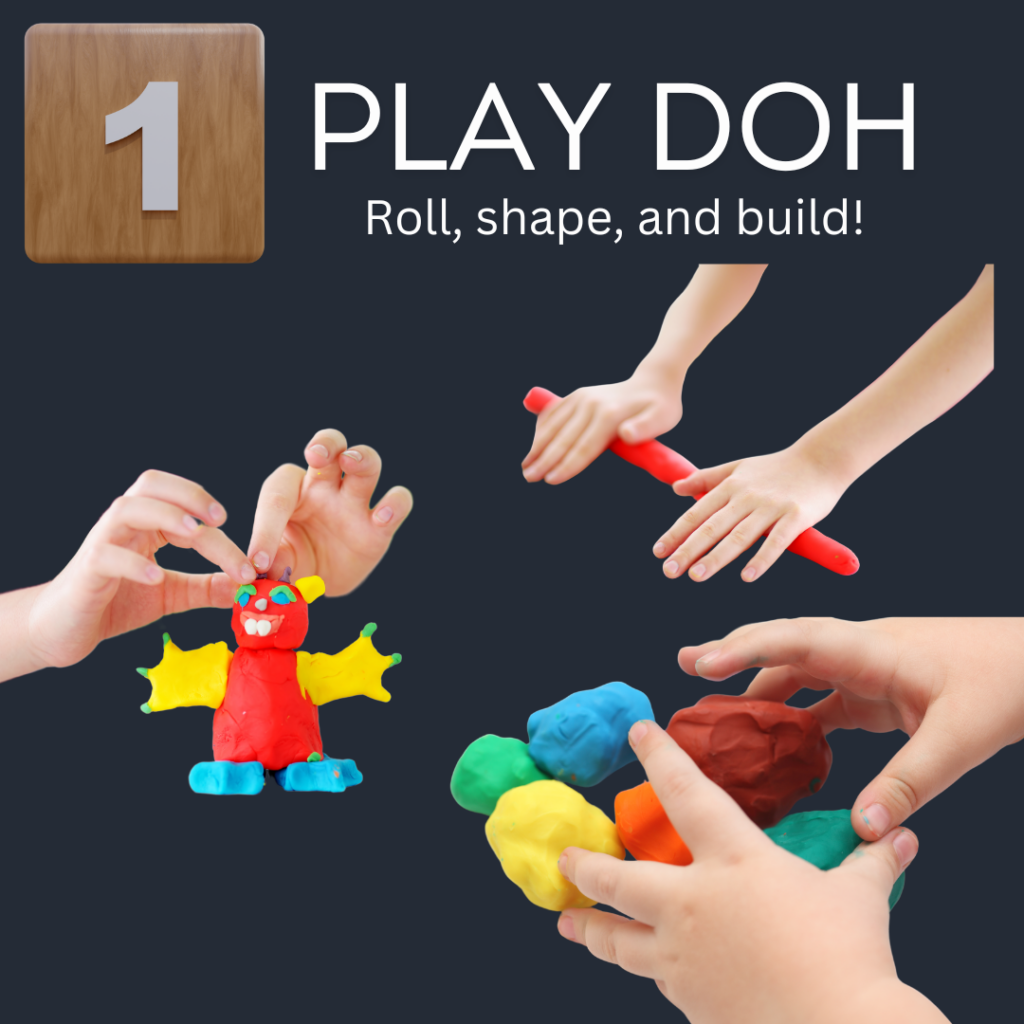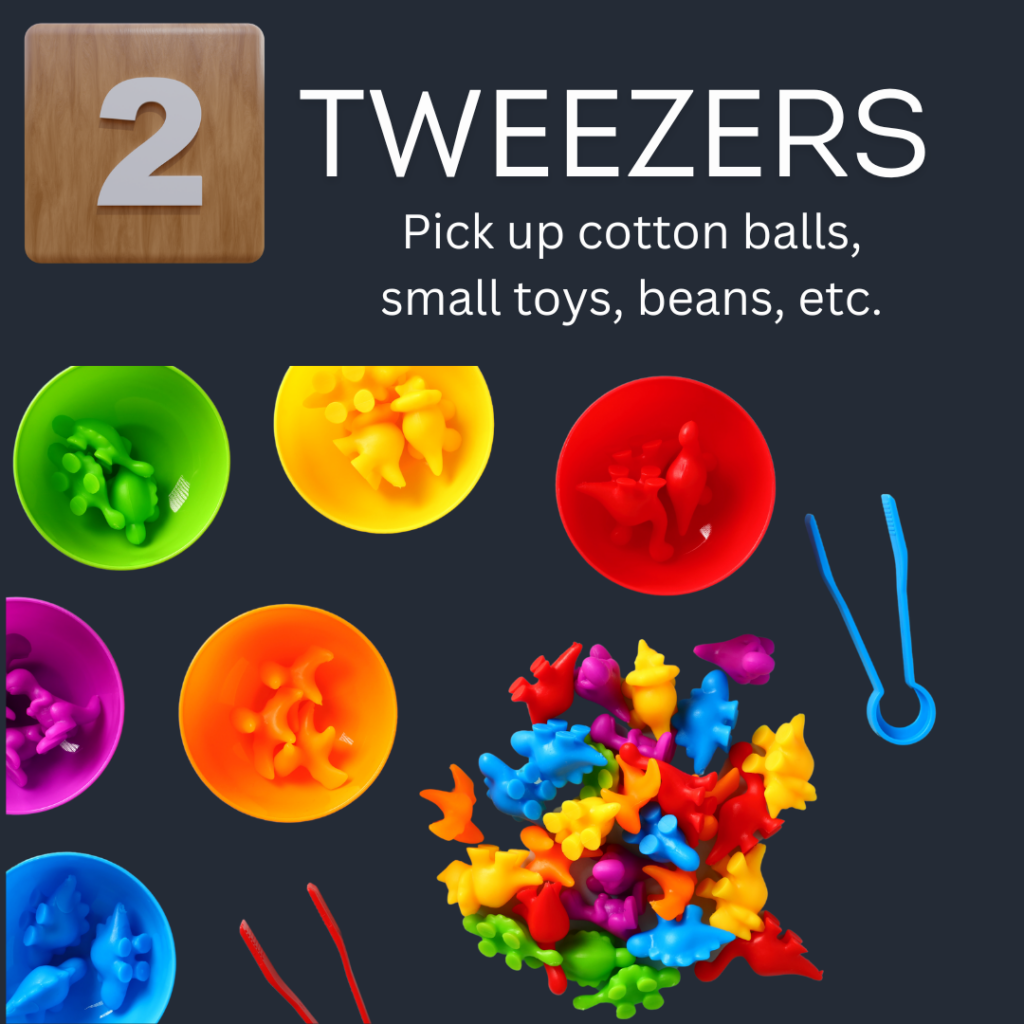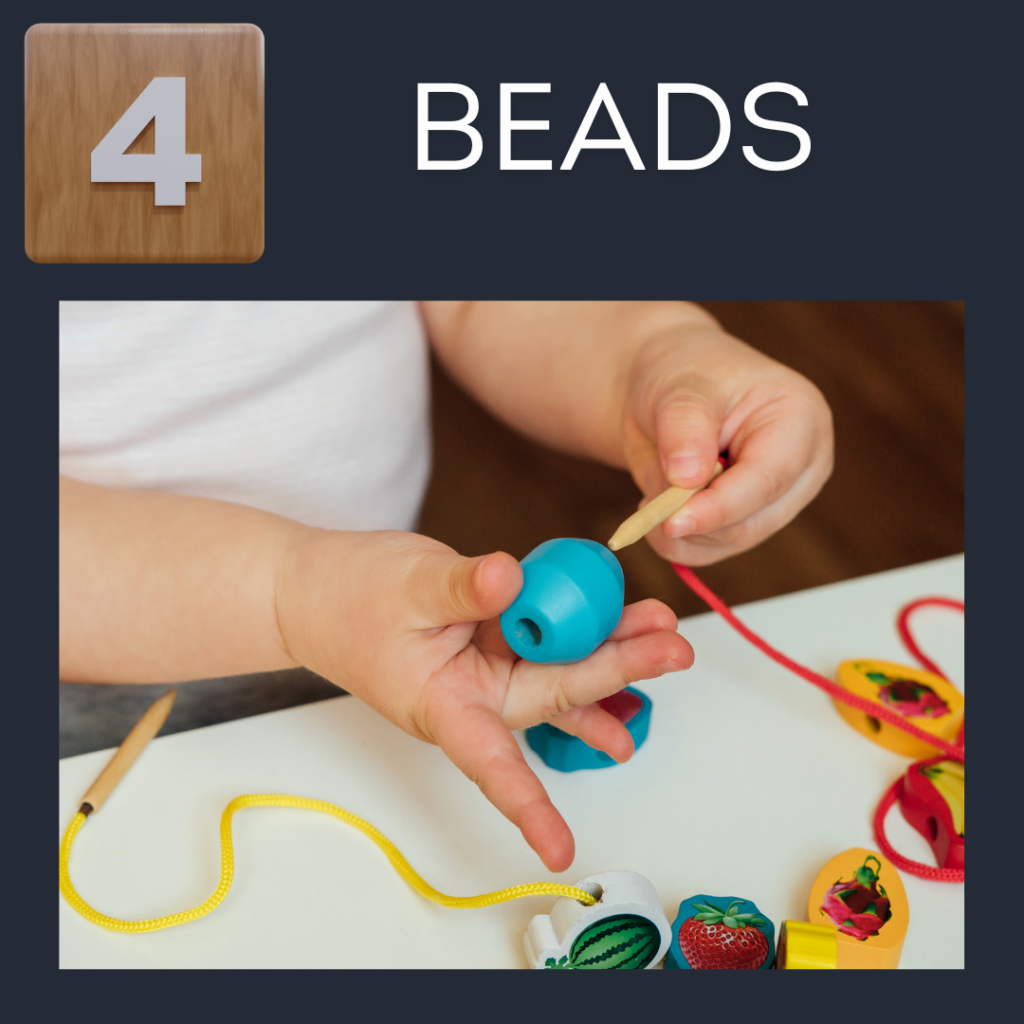To hold a pencil, your child or student needs to form a triangle with their thumb, index and middle finger. This is known as a basic tripod grip. With this grip, your child or student has optimal control over their pencil.
For some children this fine motor task is challenging. There are many fun and engaging activities that you can do with your child or student to help strengthen the muscles in their hand and fingers.

Playing with playdoh is not only fun for children but a great way to strengthen the hand muscles needed for tripod grip!
By rolling, squishing, molding, breaking apart, and flattening the playdough, children are developing their fine motor skills.
Think broadly when you hear “tweezers”. Your child can use your cosmetic metal tweezers, the larger plastic play versions included in children’s doctors kits, or even kitchen tongs for these fine motor activities!
To play – give them a pair of “tweezers” and a pile of things to sort – pom poms, small toys, cotton balls, beans, etc. With each squeeze of the tongs, your child is working on strengthening their hand muscles!


Most kids love LEGO!
Due to the size of the pieces, children naturally use the fingers required to hold a pencil when building with Lego! So take out some Lego and let them use their creativity and imagination. They’ll be strengthening their hand muscles at the same time!
Stringing beads is a great fine motor activity that works on hand eye coordination as well as the hand muscle strength required for a tripod grip.
This activity can be done on pipe cleaners, yarn, thin rope, shoe laces, or traditional beading string. Your child can string beads of any shape or size, cut up straws, or even penne noodles!

As your child or student strengthens their hand muscles they will experience less fatigue, hand cramps, and control over their pencil. So take out the beads, playdoh and Lego! It’s time to play fine motor style!

